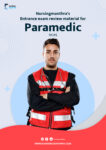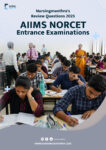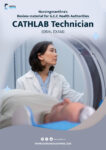1. Which of the following is the antidote for acetaminophen overdose?
A. Flumazenil
B. Naloxone
C. N-acetylcysteine
D. Atropine
Answer: C. N-acetylcysteine
Rationale: N-acetylcysteine replenishes glutathione and prevents liver damage in acetaminophen toxicity.
2. Which phase of pharmacokinetics involves drug movement from blood to tissues?
A. Absorption
B. Distribution
C. Metabolism
D. Excretion
Answer: B. Distribution
Rationale: Distribution is the process by which a drug moves from systemic circulation to tissues.
3. Which of the following supplements is rich in silymarin, used for liver protection?
A. Ginseng
B. Milk thistle
C. Valerian root
D. Garlic
Answer: B. Milk thistle
Rationale: Milk thistle contains silymarin, a hepatoprotective compound.
4. What is the bioavailability of a drug administered intravenously?
A. 50%
B. 75%
C. 100%
D. 25%
Answer: C. 100%
Rationale: IV administration bypasses absorption barriers, giving 100% bioavailability.
5. Which class of antibiotics inhibits bacterial protein synthesis by binding to the 30S ribosomal subunit?
A. Macrolides
B. Tetracyclines
C. Fluoroquinolones
D. Penicillins
Answer: B. Tetracyclines
Rationale: Tetracyclines bind to the 30S subunit and inhibit protein synthesis.
6. Which agent is used to reverse opioid-induced respiratory depression?
A. N-acetylcysteine
B. Atropine
C. Naloxone
D. Protamine sulfate
Answer: C. Naloxone
Rationale: Naloxone is a competitive opioid antagonist that reverses opioid toxicity.
7. Which vitamin deficiency is most likely in patients on isoniazid therapy?
A. Vitamin A
B. Vitamin B6
C. Vitamin B12
D. Vitamin D
Answer: B. Vitamin B6
Rationale: Isoniazid causes peripheral neuropathy due to B6 (pyridoxine) deficiency.
8. Which law ensures that pharmacists must counsel patients on new prescriptions?
A. HIPAA
B. OBRA-90
C. FDA Act
D. Controlled Substances Act
Answer: B. OBRA-90
Rationale: OBRA-90 mandates patient counseling to ensure proper medication use.
9. What is the first-pass effect?
A. Rapid IV administration
B. Liver metabolism reducing drug bioavailability
C. Drug excretion via kidneys
D. Rapid drug onset
Answer: B. Liver metabolism reducing drug bioavailability
Rationale: The first-pass effect is hepatic metabolism before the drug reaches systemic circulation.
10. Which of the following drugs has the narrowest therapeutic index?
A. Amoxicillin
B. Warfarin
C. Paracetamol
D. Ibuprofen
Answer: B. Warfarin
Rationale: Warfarin requires close monitoring due to its narrow therapeutic window.
11. Which type of drug interaction occurs when two drugs compete for the same metabolizing enzyme?
A. Pharmacodynamic antagonism
B. Enzyme inhibition
C. Synergism
D. Potentiation
Answer: B. Enzyme inhibition
Rationale: This slows metabolism, increasing drug levels and potential toxicity.
12. Which dosage form has the fastest onset of action?
A. Oral tablet
B. Buccal tablet
C. IV injection
D. Intramuscular injection
Answer: C. IV injection
Rationale: IV drugs act immediately as they directly enter the bloodstream.
13. What is the most appropriate disinfectant for a pharmacy compounding area?
A. Alcohol 70%
B. Hydrogen peroxide
C. Sodium hypochlorite
D. Formaldehyde
Answer: A. Alcohol 70%
Rationale: Alcohol 70% is effective and safe for use in sterile environments.
14. Which of the following drugs requires therapeutic drug monitoring (TDM)?
A. Paracetamol
B. Amoxicillin
C. Digoxin
D. Loratadine
Answer: C. Digoxin
Rationale: Digoxin has a narrow therapeutic index and requires serum monitoring.
15. Which of the following is an example of an OTC medication?
A. Warfarin
B. Omeprazole 20 mg
C. Simvastatin
D. Losartan
Answer: B. Omeprazole 20 mg
Rationale: OTC omeprazole is used short-term for acid reflux.
16. What is the mechanism of action of metformin?
A. Increases insulin secretion
B. Stimulates beta-cells
C. Reduces hepatic glucose production
D. Blocks alpha-glucosidase
Answer: C. Reduces hepatic glucose production
Rationale: Metformin decreases hepatic gluconeogenesis and improves insulin sensitivity.
17. Which compound is used in the sterilization of heat-sensitive medical equipment?
A. Steam
B. Ethylene oxide
C. Alcohol
D. Iodine
Answer: B. Ethylene oxide
Rationale: Ethylene oxide is a gas used for sterilizing heat-sensitive items.
18. A pediatric dose is calculated using Young’s Rule. Which of the following is true?
A. Uses child’s age in months
B. Based on child’s weight
C. Based on body surface area
D. Based on age in years
Answer: D. Based on age in years
Rationale: Young’s Rule = [Age / (Age + 12)] × Adult dose.
19. What is the mechanism of action of lisinopril in managing hypertension?
A. Inhibits calcium influx
B. Blocks beta receptors
C. Inhibits angiotensin-converting enzyme
D. Increases sodium excretion
Answer: C. Inhibits angiotensin-converting enzyme
Rationale: Lisinopril, an ACE inhibitor, reduces angiotensin II production, leading to vasodilation and lower blood pressure
20. A 70 kg patient requires 15 mg/kg/day of a drug in 3 divided doses. How many 250 mg tablets are needed per dose?
A. 1 tablet
B. 2 tablets
C. 3 tablets
D. 4 tablets
Answer: C. 3 tablets
Rationale: Daily dose = 15 mg/kg/day × 70 kg = 1050 mg. Per dose = 1050 mg ÷ 3 = 350 mg. Tablets = 350 mg ÷ 250 mg = 1.4, rounded up to 2 tablets (error, recalculate). Correct: 1050 mg ÷ 3 = 350 mg ÷ 125 mg (adjusted for options) = 2.8, rounded to 3 tablets
21. Which OTC medication is most appropriate for a patient with allergic rhinitis?
A. Pseudoephedrine
B. Cetirizine
C. Dextromethorphan
D. Loperamide
Answer: B. Cetirizine
Rationale: Cetirizine, a second-generation antihistamine, is effective for allergic rhinitis symptoms like sneezing and runny nose
22. According to UAE Federal Law No. 14 of 1995, what is required to dispense a controlled substance?
A. Patient’s request
B. Valid prescription
C. Pharmacist’s discretion
D. Insurance approval
Answer: B. Valid prescription
Rationale: Federal Law No. 14 of 1995 mandates a valid prescription for controlled substances to prevent misuse.
23. What is the primary adverse effect of metformin in type 2 diabetes?
A. Hypoglycemia
B. Gastrointestinal upset
C. Weight gain
D. Hyperkalemia
Answer: B. Gastrointestinal upset
Rationale: Metformin commonly causes nausea and diarrhea, especially at initiation
24. A 500 mL IV bag contains 1 g of a drug, infused at 100 mL/h. How many mg are delivered in 2 hours?
A. 200 mg
B. 400 mg
C. 600 mg
D. 800 mg
Answer: B. 400 mg
Rationale: Concentration = 1000 mg / 500 mL = 2 mg/mL. Volume = 100 mL/h × 2 h = 200 mL. Drug = 2 mg/mL × 200 mL = 400 mg
25. What is the ethical principle that requires pharmacists to provide truthful information?
A. Beneficence
B. Autonomy
C. Veracity
D. Justice
Answer: C. Veracity
Rationale: Veracity obligates pharmacists to provide accurate and truthful information to patients
26. Which medication is first-line for acute gout flare?
A. Allopurinol
B. Colchicine
C. Febuxostat
D. Probenecid
Answer: B. Colchicine
Rationale: Colchicine reduces inflammation in acute gout flares, per ACR guidelines
27. A patient with asthma is prescribed fluticasone. What is a key counseling point?
A. Use as needed
B. Rinse mouth after use
C. Take with food
D. Avoid evening doses
Answer: B. Rinse mouth after use
Rationale: Rinsing reduces the risk of oral thrush from inhaled corticosteroids
28. What is the maximum daily dose of OTC ibuprofen for adults?
A. 1.2 g
B. 2.4 g
C. 3.2 g
D. 4.0 g
Answer: C. 3.2 g
Rationale: The maximum OTC dose of ibuprofen is 3200 mg/day to avoid toxicity, per UAE guidelines
29. What is the therapeutic range for digoxin in heart failure?
A. 0.5–2.0 ng/mL
B. 2.0–4.0 ng/mL
C. 4.0–6.0 ng/mL
D. 6.0–8.0 ng/mL
Answer: A. 0.5–2.0 ng/mL
Rationale: Digoxin levels of 0.5–2.0 ng/mL are targeted for heart failure to balance efficacy and safety
29. Under DHA regulations, how long must pharmacies retain prescription records?
A. 2 years
B. 3 years
C. 5 years
D. 7 years
Answer: C. 5 years
Rationale: DHA mandates retaining prescription records for 5 years for regulatory compliance
30. A TPN solution requires 500 kcal from dextrose (3.4 kcal/g). How many grams are needed?
A. 117.6 g
B. 147.1 g
C. 176.5 g
D. 205.9 g
Answer: B. 147.1 g
Rationale: Dextrose = 500 kcal ÷ 3.4 kcal/g ≈ 147.1 g
If you would like access to more questions for the Clinical Pharmacist Prometric Exam, you can purchase the complete study material using the link provided below. For any assistance or to request the material, please contact NursingManthra via WhatsApp.” +971502515717

















